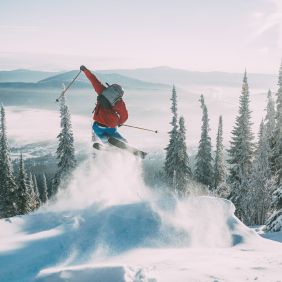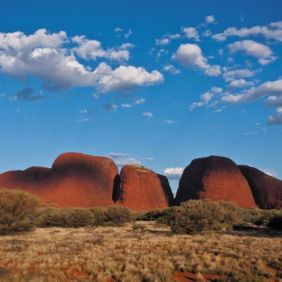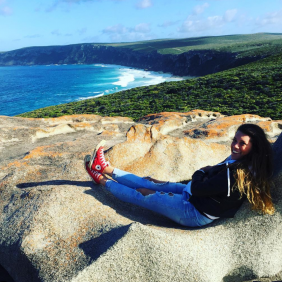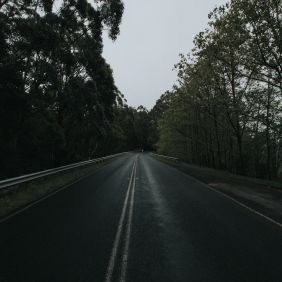About Litchfield
The ancient landscape of Litchfield National Park is carved out by water and covers an area of around 1500km2. It is located in the Top End of the Northern Territory, 120km southwest of Darwin. The park is considered a significant cultural site to the Aboriginal people native to the area and is dominated by a central sandstone plateau in the Tabletop Range.
The range creates a striking escarpment that supports rich woodland, crashing waterfalls cascade from the escarpment walls carving deep gorges that are filled with monsoon rainforest. There is a vast selection of walking tracks throughout the park that vary in difficulty, from an easy 30-minute walk along Shady Creek to the 39km Tabletop Track.
All across the park there are stunning waterfalls to discover; use the BBQ facilities at Wangi Falls, plunge into the waters of Florence Fall hidden in the monsoon forest and enjoy the breathtaking views from Sandy Creek Falls.
Cross challenging 4WD terrain and you’ll be rewarded with the spectacular Lost City, a natural large sandstone structure eroded by thousands of years of wind and rain creating narrow passages and domes. Estimated to be over 500 million years old you can see how the complex freestanding rock formations and maze of snaking alleys look like the remains of an ancient city.
Another intriguing phenomenon that draws many visitors to the park are the hundreds of Magnetic and Cathedral Termite mounds, some standing at over 4 metres tall! Marvel at how the Magnetic Termite mounds are perfectly aligned with the four points of a compass allowing the temperature of the mounds to be regulated perfectly for its inhabitants all year round.
Wildlife in Litchfield with Litchfield Tours
Kangaroos, wallabies, possums, bats and dingos are among the more common mammals residing within the park which also supports hundreds of bird species such as kites, bee-eaters and drongos. Especially whilst refreshing at a waterhole keep your eyes peeled for some pretty large monitors as well as fresh and saltwater crocodiles.
Things to consider
- Only swim in designated areas, waterways can be closed due to flooding and the presence of crocodiles
- There are many insects in the area so bug spray or fly nets can be beneficial
- Ensure you have the correct vehicle for the terrain you are travelling on
- There are no bins within the park, ensure you remove all your rubbish from the park
Litchfield travel itinerary and things to do:
- Enjoy your own private rock pool at Buley Rockhole
- Soar over the Lost City on a scenic helicopter flight
- Learn the local traditions at Blythe Homestead
- Get that perfect snap swimming underneath a waterfall
- Be amazed at the jumping crocodiles on the Adelaide River
- Have a picturesque picnic at Butterfly Gorge Nature Park
- Trek along the secluded Greenant Creek
- Surround yourself in history at Bamboo Creek Tin Mine
Litchfield Tours Can Be Tailored According to Your Needs
Do you want a Litchfield + Jumping Croc Cruise? Or how about a 1 Day Litchfield Tour with a BBQ lunch included? With so many beautiful places to choose from, we know that exploring Litchfield National Park can be confusing for some, which is why we offer various tour options for travelling convenience. For example, one of our most popular tours is the 3 Day 4WD Kakadu and Litchfield tour, be transported in an air-conditioned 4WD vehicle via Kakadu National Park and spend the trip hunting down the internationally renowned Aboriginal art, crocodiles, waterfalls, and panoramic views!
Frequently asked questions about Litchfield
Is Litchfield expensive to visit?
Entrance to Litchfield National park is free, camping fees apply but are very reasonable at an average of $5 per person.
How long do you need to see Litchfield
2 days
To relax and enjoy the numerous waterfalls, plunge pool and walking trails we recommend staying two days in the park.
What is the weather like in Litchfield?
Litchfield has a dry tropical semiarid climate meaning that its climate changes from being dry, tropical and semiarid throughout the year. The average annual temperature here is 32 degrees Celsius however the humidity varies greatly throughout the seasons; dry season lasts from April to September bringing hot days with low humidity whilst the wet season lasts from October to March bringing hot and humid weather with regular flooding and thunderstorms.
When is the best time to visit Litchfield?
The wet season brings overnight temperatures that can drop below zero degrees making it challenging to camp in the park over this period, we recommend visiting during the cooler months of the Dry season (June-September).
Have you visited Kimberley? Try Kimberley Tours.



